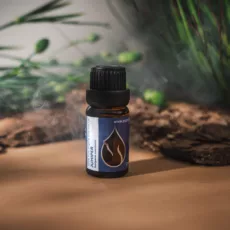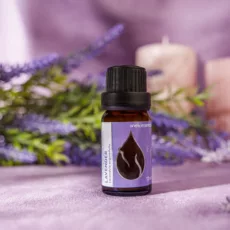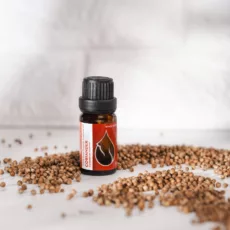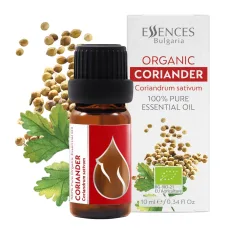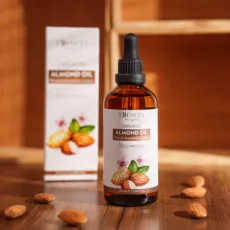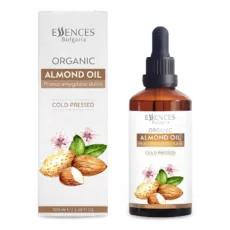Properties of Juniper Essential Oil

Juniper essential oil is extracted from the plant Juniperus communis, which belongs to the cypress family. The plant is also known as smrika, kleka, and blue juniper. In French, juniper is genévrier, and in Italian, it is ginepro. Interestingly, juniper gives both the aroma and the name to the spirit gin.
In aromatherapy, common blue juniper is most often used to strengthen the nervous system and spirit. It also has broad applications in treating arthritis, gout, acne, dermatitis, and psoriasis.
Facts about Juniper
Juniper is an evergreen shrub that grows 2–10 meters tall and is mainly found in the Northern Hemisphere. It has bluish-green needle-like leaves, with female plants producing blue or black berries. The aroma is fresh and woody.
Juniper has two main subgroups: Oxycedrus, characterized by needle-like leaves, and Sabina, which has smaller, scale-like leaves. In Bulgaria, five main types of juniper are found: Blue Juniper (communis L.), Red Juniper (oxycedrus L.), Low Juniper (pygmaea C. Koch), Fragrant/Cossack Juniper (sabina L.), and Tree Juniper (excelsa M. Bieb.). The last two species are rare and legally protected.
Chemical Composition of Juniper Essential Oil
Juniper essential oil contains alpha-pinene (51.4%), myrcene (8.3%), beta-pinene (5.0%), alpha-terpinene, gamma-terpinene, cineole, terpinen-4-ol, camphene, caryophyllene, and others.
History of Healing Properties
Juniper’s healing properties were well known and used by Native Americans, who applied it for wound care and bone and joint ailments. During plague outbreaks and other infectious diseases, French hospitals burned juniper branches to disinfect enclosed spaces. Juniper branches are still used in some spiritual practices and ceremonies in Tibet.
Today…
Juniper essential oil is traditionally used as a diuretic, for arthritis, diabetes, gastrointestinal, and autoimmune disorders. Evidence shows it has antioxidant, antibacterial, antiviral, and antifungal effects. Some studies report anti-inflammatory, cytotoxic, hypoglycemic (blood sugar-lowering), and hypolipidemic (serum lipid-lowering) effects of the berries in experimental models.
Medical Applications of Juniper
Thanks to its chemical composition, juniper finds broad medical applications. Here are some clinically supported properties:
-
Antioxidant Action
The presence of alpha- and beta-pinene, which belong to the polyphenol group, gives juniper oil strong antioxidant potential. -
Neurological Benefits
Extracts of common blue juniper have protective effects on nerve tissue and improve memory and cognitive processes. Studies suggest they may be potential alternative treatments for Parkinson’s, Alzheimer’s, and other chronic neurological disorders. Inhalation of juniper oil inhibits acetylcholinesterase (AChE) activity and prevents oxidative brain damage (Cioanca et al., 2015). -
Antidiabetic Properties
Application of juniper essential oil significantly lowers cholesterol and triglycerides in hypercholesterolemic rats (Akdogan et al., 2012). -
Antibacterial Properties
Juniper oil demonstrates strong antibacterial activity. It has proven effectiveness against Bacillus cereus, Escherichia coli, Listeria monocytogenes, Staphylococcus, and other fungal infections (Source: National Library of Medicine). -
Application in Certain Types of Cancer
Due to its antioxidant potential, juniper extract has applications in treating human neuroblastoma SH-SY5Y (Lantto et al., 2016). Similarly, juniper berry oil has been found to aid in treating leukemia and liver cancer (Saab et al., 2012; Lantto et al., 2016). These effects are attributed to the phenolic compounds in juniper.
Juniper Oil in Cosmetics
Juniper essential oil is widely used in cosmetics and relaxation rituals. It tones the skin and improves its texture and appearance.
Juniper berry oil effectively addresses skin infections such as rashes and eczema. Its antioxidant content makes it a natural tonic and an excellent ally against skin irritations and pigmentation issues.
Regular use of juniper essential oil can also reduce the appearance of cellulite on the hips and thighs. Diluted in almond or hemp oil, it can be massaged into the skin in the evening as part of your beauty ritual. Additionally, juniper essential oil is commonly used in massage for muscle relaxation.
Juniper Essential Oil – 3 Quick Recipes
-
Energy and Focus Blend
Using a diffuser, aroma lamp, or roll-on, boost energy and focus. Blend 3 drops of juniper oil, 2 drops of basil essential oil, and 1 drop of white pine. Let the oils work their magic. -
Deep Facial Cleanse
For deep pore cleansing and removal of impurities, add 2–3 drops of juniper oil and clary sage to a natural green clay mask. Ideal for oily or acne-prone skin. -
Relaxing Massage
Mix 50 ml of almond, hemp, or coconut oil with 5 drops of juniper oil, 5 drops of lavender oil, and 2 drops of coriander or Roman chamomile essential oil. Massage gently for relaxation.
